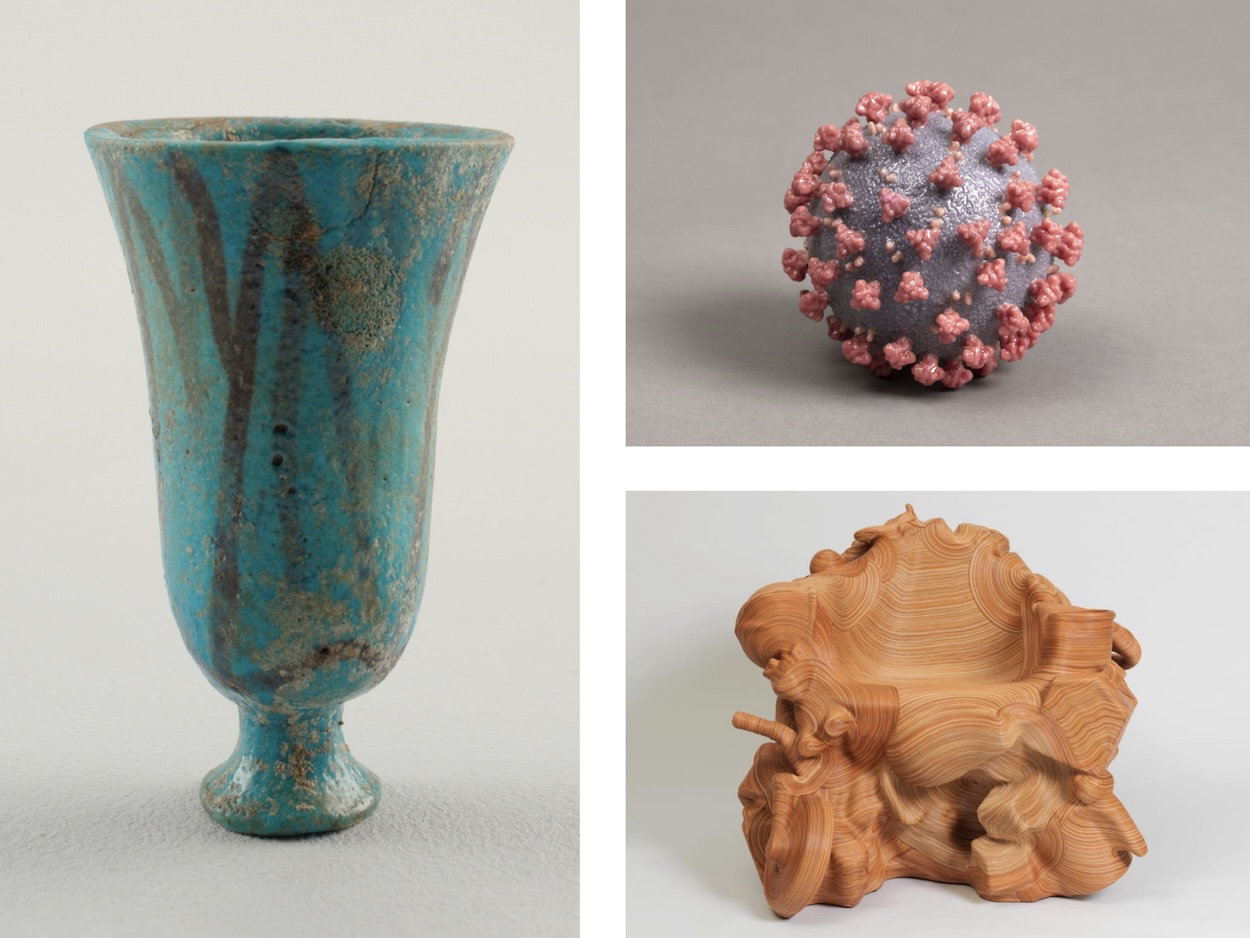As technology has progressed and new methods of creation have emerged, the word “design” hardly means the same thing today as it did centuries ago. Blueprints for buildings are no longer drawn in the sand or carefully traced on parchment with a quill; though few may admit to it, some architects are encouraged to use text-to-image AI programs like DALL-E 2 and Midjourney to spark early ideas for projects. Despite these shifts, objects of design can help better make sense of moments in history. That’s one of the takeaways from “Acquired! Shaping the National Design Collection,” at the Cooper Hewitt, Smithsonian Design Museum, which has amassed holdings of 215,000 objects from around the world.
The evolution of design is immediately clear upon entry, where two objects—a 3D-printed model of a coronavirus particle and a turquoise cup from ancient Egypt, the most recent and earliest objects in the collection—are presented side by side. Even when the museum was founded, in 1897, its curators focused primarily on design from a decorative standpoint, dividing objects into textiles, wall coverings, prints and graphic design, or product design and decorative arts. Those categories provide a foundation but hewed largely to the ultra-wealthy and overlooked the impact of everyday objects on day-to-day life.
On that note, the show highlights the Cooper Hewitt curators’ shift in perspective over time. Last year, the museum expanded its holdings with a new section dedicated to digital design. It encompasses everything from websites (e.g. The Watercolor Map) and inclusive emojis to Tokujin Yoshioka’s printable, easy-to-make face mask. “I’m interested in a very expansive definition of design that takes into account aesthetics and functionality, but also systems,” Maria Nicanor, the museum’s director, tells Fast Company. “I’m as interested in an 18th-century teacup as I am in highway infrastructure for the whole entire country—both things are designed.”
One standout from the digital design section is The Substitute, a video projection that depicts the virtual creation of a life-size male northern white rhino, the last of which died in 2018. Using AI, Alexandra Daisy Ginsberg rendered the rhino as a blurry mass of pixels that gradually transforms into a lifelike specimen pacing around a white cube. The footage questions our role in mass extinction—and proves design’s potential to transcend the purely decorative and address the most urgent questions of our time. As Nicholas de Monchaux writes, the definition of design is shifting from the search for more beautiful shapes to the shaping of a more beautiful world.
“Acquired! Shaping the National Design Collection” will be on view at the Cooper Hewitt, Smithsonian Design Museum (2 E 91st St, New York) until September 2.

